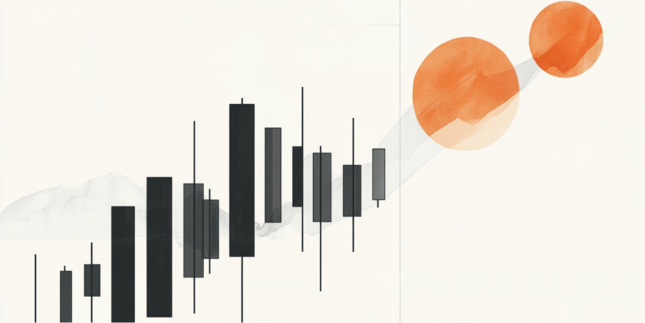- NZD/USD teases Monday’s low amid failure to keep the bounce off 0.7153.
- US dollar benefits from downbeat data, market frenzy and chatters over US stimulus.
- Traders in Auckland return from long weekend without any major data/events.
- RBA, risk news become the key for fresh impulse.
NZD/USD struggles to mark another recovery wave from 0.7150-55 area during the initial Asian session on Tuesday. The Kiwi pair began the week’s trading around the same level before rising 0.7204 and the following U-turn to revisit the mid-0.7100 area the previous day.
While traders were in Auckland were cheering a local holiday, global markets portrayed notable moves amid a battle between the retail clients and hedge funds, backed by chatters over the social media platforms. Following the stellar move by equities during the last week, this time it was silver which gained 11% due to the market frenzy.
Other than the retail rush that favored the US dollar, the downbeat performance of the European economics and mixed statistics from America, coupled with the on-going stimulus talks between US President Joe Biden and Republicans also helped the greenback. That said, the US dollar index (DXY) jumped to the highest since December 10, 2020, by the end of Monday’s Trading.
It should be noted that the recovery in the coronavirus (COVID-19) conditions, ex-Australian, coupled with a jump in the vaccinations, favor the risks even as market imperfection challenges the mood.
Against this backdrop, Wall Street benchmarks closed with positive performance while the US 10-year Treasury yields drop 2.2 basis points (bps) to 1.077% by press time.
Given the on-going stimulus talks in the White House, NZD/USD traders are likely to pay major attention to the relief package news wherein the bulls may look for a confirmation of the $1.9 trillion bundle of aid. Also important will be the monetary policy meeting of the Reserve Bank of Australia (RBA), due to Australia’s trade ties with New Zealand. Herein, a confirmation of downbeat inflation prospects may weigh on the kiwi pair.
It’s worth mentioning that the global markets have been sensitive to social media chatters and hence any hints from the same could also move the NZD/USD pair, which in turn makes them the key to watch.
Technical analysis
Sustained trading below 21-day SMA, currently around 0.7192, directs NZD/USD towards breaking an ascending support line from December 21, 2020, at 0.7146 now, a break of which will attack 50-day SMA level of 0.7133 for further downside. Meanwhile, a one-month-old resistance line near 0.7225 adds to the upside filters.
Information on these pages contains forward-looking statements that involve risks and uncertainties. Markets and instruments profiled on this page are for informational purposes only and should not in any way come across as a recommendation to buy or sell in these assets. You should do your own thorough research before making any investment decisions. FXStreet does not in any way guarantee that this information is free from mistakes, errors, or material misstatements. It also does not guarantee that this information is of a timely nature. Investing in Open Markets involves a great deal of risk, including the loss of all or a portion of your investment, as well as emotional distress. All risks, losses and costs associated with investing, including total loss of principal, are your responsibility. The views and opinions expressed in this article are those of the authors and do not necessarily reflect the official policy or position of FXStreet nor its advertisers. The author will not be held responsible for information that is found at the end of links posted on this page.
If not otherwise explicitly mentioned in the body of the article, at the time of writing, the author has no position in any stock mentioned in this article and no business relationship with any company mentioned. The author has not received compensation for writing this article, other than from FXStreet.
FXStreet and the author do not provide personalized recommendations. The author makes no representations as to the accuracy, completeness, or suitability of this information. FXStreet and the author will not be liable for any errors, omissions or any losses, injuries or damages arising from this information and its display or use. Errors and omissions excepted.
The author and FXStreet are not registered investment advisors and nothing in this article is intended to be investment advice.
Recommended content
Editors’ Picks

EUR/USD challenges 1.0500 on Dollar's bounce
The US Dollar now picks up further pace and weighs on the risk-associated assets, sending EUR/USD to the boundaries of the key 1.0500 region and at shouting distance from its 2024 lows.

GBP/USD remains weak and puts 1.2600 to the test
GBP/USD remains on the back foot and now approaches the key support at 1.2600 the figure in response to the resurgence of the bid bias in the Greenback.

Gold extends gains beyond $2,660 amid rising geopolitical risks
Gold extends its bullish momentum further above $2,660 on Thursday. XAU/USD rises for the fourth straight day, sponsored by geopolitical risks stemming from the worsening Russia-Ukraine war. Markets await comments from Fed policymakers.

BTC hits an all-time high above $97,850, inches away from the $100K mark
Bitcoin hit a new all-time high of $97,852 on Thursday, and the technical outlook suggests a possible continuation of the rally to $100,000. BTC futures have surged past the $100,000 price mark on Deribit, and Lookonchain data shows whales are accumulating.

A new horizon: The economic outlook in a new leadership and policy era
The economic aftershocks of the COVID pandemic, which have dominated the economic landscape over the past few years, are steadily dissipating. These pandemic-induced economic effects are set to be largely supplanted by economic policy changes that are on the horizon in the United States.

Best Forex Brokers with Low Spreads
VERIFIED Low spreads are crucial for reducing trading costs. Explore top Forex brokers offering competitive spreads and high leverage. Compare options for EUR/USD, GBP/USD, USD/JPY, and Gold.